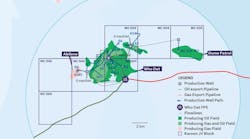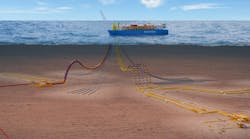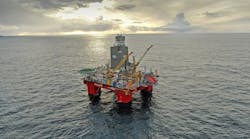PORT FOURCHON, Louisiana – The US Department of the Interior’s (DOI) Bureau of Safety and Environmental Enforcement (BSEE) has released the final BOP systems and well control regulations.
BSEE said its final Well Control Rule removes unnecessary regulatory burdens to responsible offshore development while maintaining safety and environmental protection.
US Secretary of the Interior David Bernhardt said: “Today’s final rule puts safety first, both public and environmental safety, in a common-sense way. Incorporating the best available science, best practices, and technological innovations of the past decade, the rule eliminates unnecessary regulatory burdens while maintaining safety and environmental protection offshore...”
BSEE Director Scott Angelle said: “BSEE’s review has been thorough, careful, and tailored. Free of undue regulatory burden while ensuring that operators conduct outer continental shelf activities in a safe and environmentally responsible manner, today’s rule will fuel and sustain responsible energy exploration and production of America’s outer continental shelf.”
The final revised rule leaves 274 out of 342 original Well Control Rule provisions – approximately 80% – unchanged. Sixty-eight provisions were identified as appropriate for revision, and 33 provisions were added to improve operations on the OCS. Following the direction of both Executive Order 13795 and Secretary’s Order 3350, the final rule addresses offshore oil and gas drilling, completions, workovers, and decommissioning activities.
In addition, the bureau said it considered all 424 recommendations arising from 26 separate reports from 14 different organizations developed in the wake of and in response to the Deepwater Horizon and found that none of the revisions contravened any of these recommendations.
The improvements to requirements for BOP design and testing include:
- Limiting the number of connection points to the BOP, reducing the number of potential failure points
- Equipping each BOP with a high-flow receptacle to ensure faster delivery of fluid to perform the function from an ROV
- Requiring an array of rams, which are steel covers designed to close rapidly around and over a drill pipe to stop the flow of hydrocarbons, with specific capabilities, allowing the most effective use of each ram type and maximizing functionality
- Improving the expected lifespan of a critical BOP component by specifying a testing methodology that provides a readiness check without putting unnecessary wear and tear on the component.
Many industry associations welcomed the final Well Control Rule.
American Petroleum Institute’s Vice President of Upstream and Industry Operations Erik Milito said: “This revised well control rule will help to further manage risks and better protect workers and the environment. The revision strengthens the rule and enhances a robust regulatory framework to ensure updated, modern, and safe technologies, best practices, and operations.”
National Ocean Industries Association President Randall Luthi said: “…the 2016 Well Control Rule, while well intentioned, was flawed with technical problems that actually detracted from the goal of safe operations. BSSE’s final revisions, which leave the original rule largely intact, further manage risks and better protect workers and the environment, making drilling safer.
“Crafted to focus on ways to improve safety and allow companies to meet requirements in a safe, verifiable and practical manner, the new rule will result in a stronger regulatory process. The narrowly focused revisions incorporate adaptive guidelines and innovative technology and will standardize the process for departures, or alternative compliance.
“The final rule establishes a logical and collaborative process targeting the shared goal of zero accidents and incidents.”
American Energy Alliance President Thomas Pyle said: “The green lobby is predictably trying to mislead the public about the efficacy of this rule… this rule balances the need to implement important safeguards as well as streamline regulations to ensure maximum efficiency in an area of paramount importance for the US economy. This rule provides regulatory certainty, incorporates necessary safety precautions, and will enable the US to remain a world leader in energy development and innovation.”
05/02/2019




